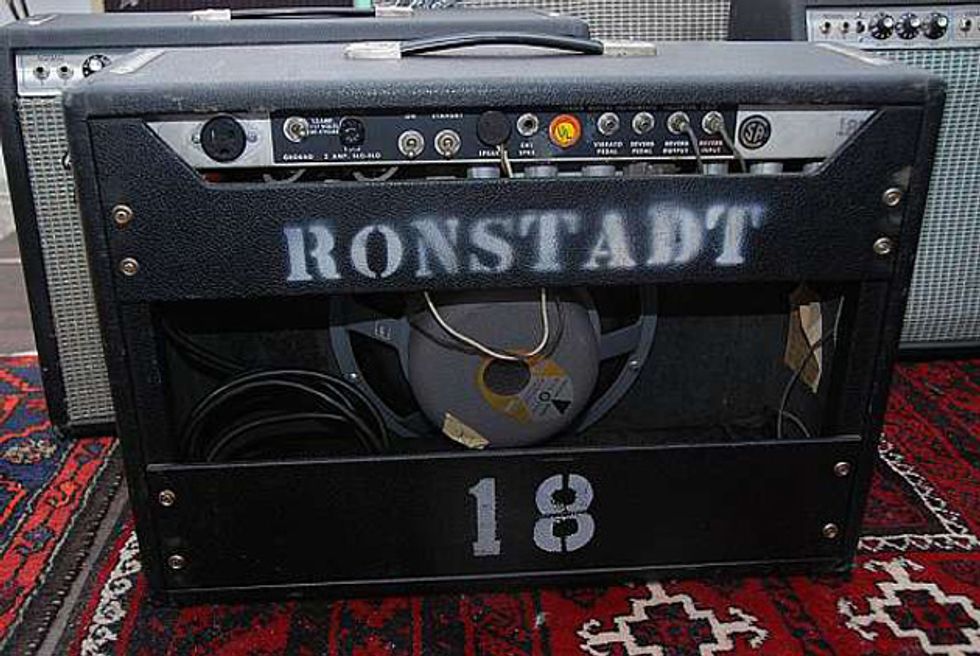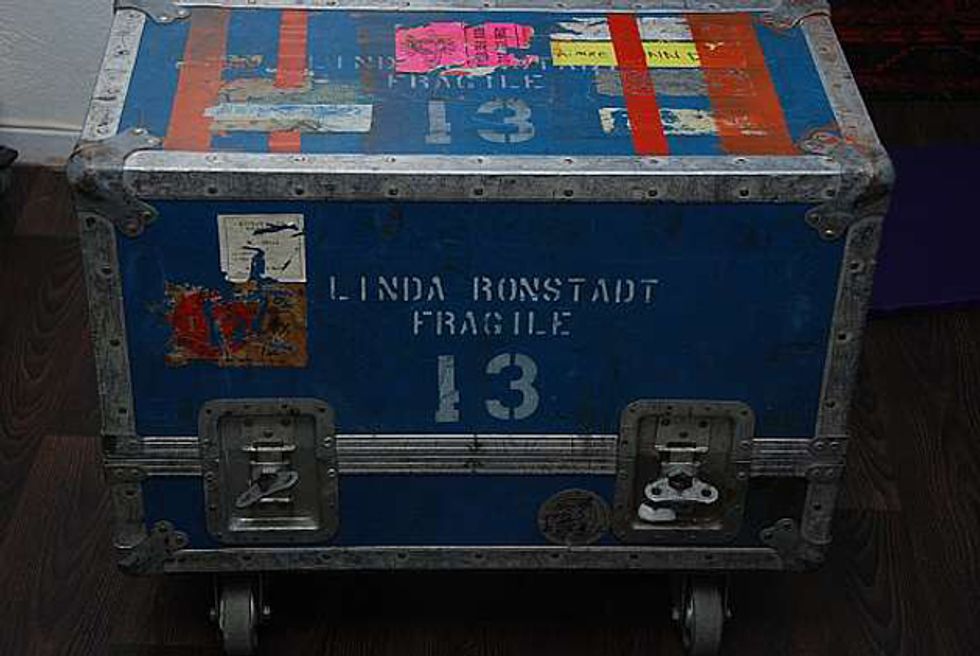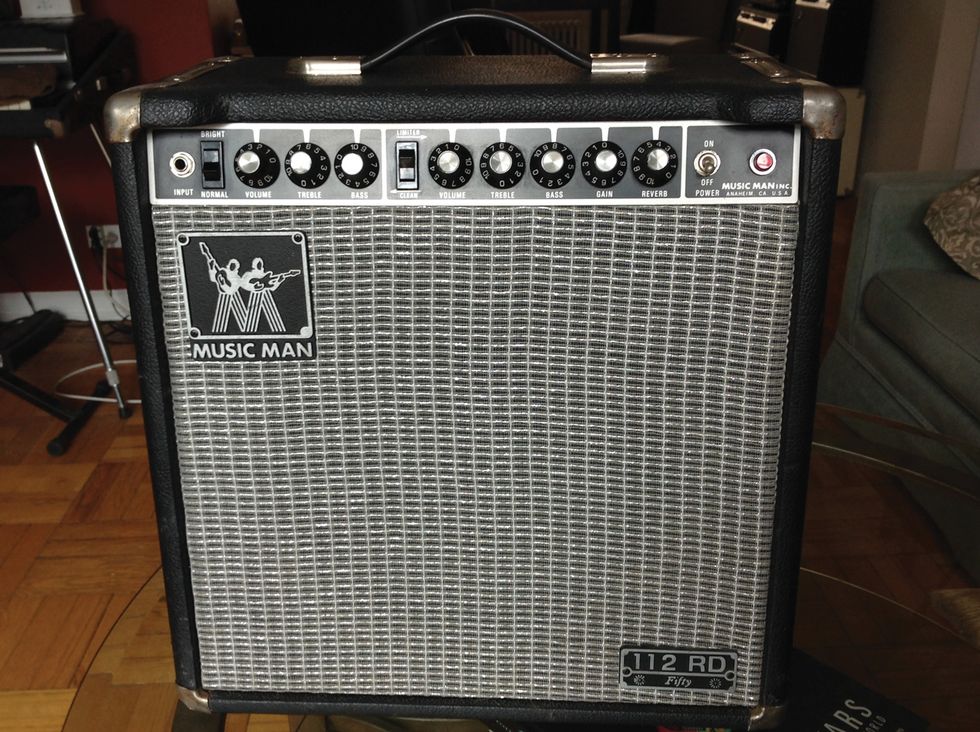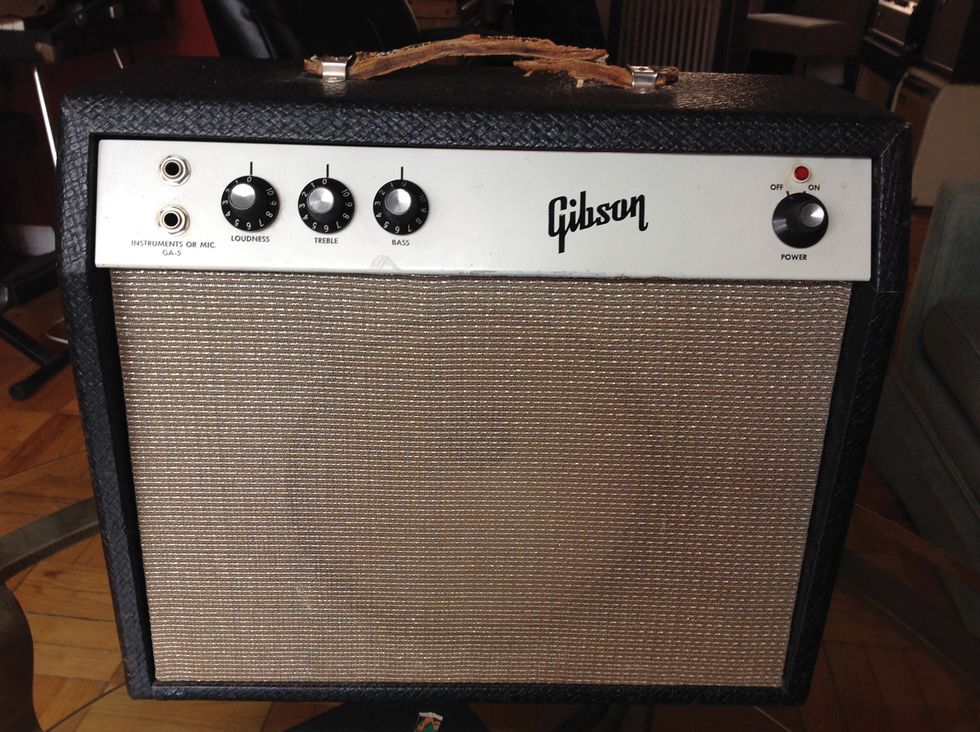Take a deep look inside this ubiquitous little workhorse, and consider a few easy mods that can make it sound and perform even better.
There are a lot of mods that can be done on a Blues Junior—the affordable, lightweight, and smallest member of Fender’s 12" combo family. These include replacing tone caps, swapping out the transformer, electrolytic cap upgrades, reverb tank mods, and more. Just google “Fender Blues Junior Mods” and prepare to be overwhelmed.
But how many of these mods are really necessary? It’s fair to assume that if you own a Blues Junior you were attracted to both its price of $749 street and at least some elements of its sound, which falls into the range of classic Fender voices, with clarity and punch. So, as PG’s “Silver and Black” columnist and resident guru of fenderguru.com, let me wade through some of the popular mods and make some recommendations about a few I think are actually beneficial, affordable, and easy to accomplish—resulting in more punch, volume, and warmth in your tone. Specifically, I’m talking about using extension cabinets, adjusting the bias by changing the resistors, replacing those electrolytic caps, and adding a resistor to tame and darken the reverb.
Before we get there, however, let’s take a look under the hood of this humble working-player’s Fender. The 15-watt, all-tube Blues Junior was introduced in 1995. It weighs only 30 pounds and measures 16" x 18" x 9", making it smaller and lighter than a Princeton, although it holds a larger 12" speaker.
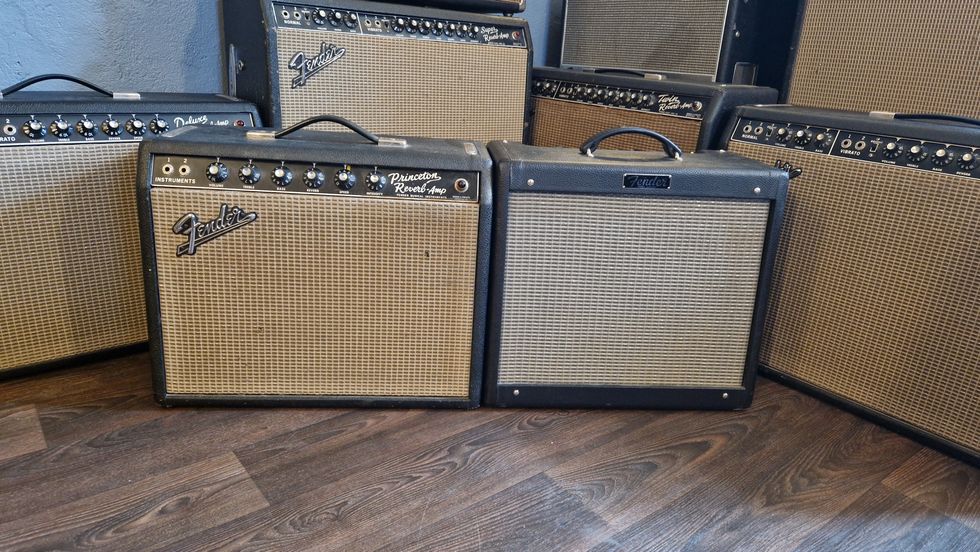
Although smaller than the Princeton, the Fender Blues Junior has a larger speaker and more wattage, with a 12" speaker compared to the Princeton’s 10", and 12 watts compared to the Junior’s 15.
How Low Can We Go?
The Blues Junior was introduced before the trendy low-wattage-amp era began, and even in the digital era, players still appreciate the Junior’s printed circuit board (PCB), manual knobs, and tubes in its preamp and power amp sections. There have been many revisions over the years, including minor changes in circuitry and components, different speakers, and the addition of a fat switch that boosts the mids and pushes the preamp stage into quicker distortion.
There are three models in the current Blues Junior IV lineup. The black Tolex amp has a Celestion A type speaker, the racing green model has a Jensen C12Q, and the lacquered tweed model comes with a Jensen C12N. They all share the same circuitry. There’s also a tube in the phase inverter, while there is a transistor-driven reverb and diode rectifier. The early Blues Juniors with green circuit boards were made in the U.S., until Fender moved production to Mexico in 2001. The Mexico-made amps have a cream-colored circuit board.
PCB amps are a little more complicated to work on than handwired amps. You must be gentle and careful with wire cutters and soldering irons to not damage the small connections. It is easy to break the board’s connection traces and pins, or accidentally touch a high voltage point in the circuit. Be careful should you venture inside.
The Tale of the Tubes
So, what can we draw from inspecting the amp and reading the schematic of a Blues Junior? The control panel has volume, master, treble, middle, bass, reverb, and fat switch controls. Reading the schematic, I find that the tube layout and circuit functions are:
V1 12AX7: The first half of the tube handles preamp gain stage one before the volume and fat functions, and the second half powers preamp gain stage two, after volume and before the EQ/tone stack.
V2 12AX7: The first half powers preamp gain stage three, after the EQ/tone stack and before the master volume, and then the phase inverter. The second half of the tube’s output is not in use.
V3 12AX7: The first half juices the phase inverter’s phase one; the second half handles the phase inverter’s phase two.
V4 and V5: That’s the home of the EL84 power tubes.
Just like the Princeton Reverb, there are three gain stages in the preamp circuit. The power amp circuit design is also based on a classic Fender black- and silver-panel-era recipe. It has dual EL84 power tubes in a push-pull Class AB configuration with fixed bias and a negative feedback loop. This means we should expect a nice, clean black-panel-style tone before the amp breaks up.
Before the power tubes sits a proper, high-performing, long-tail phase inverter based on the two available amplifier functions in the single V3 12AX7 tube. All Class AB push-pull amps need a phase inverter that splits one sine wave signal into two signals with opposite phase that are fed into each power tube. The Princeton Reverb has a weaker phase inverter than the Blues Junior, and the Blues Junior has a bigger loudspeaker but a smaller speaker cabinet, which we will get back to in a moment.
The small cabinet is the most significant bottleneck with the Blues Junior. At home, it works well for me, but onstage it gets too boxy and thin. The 12" speaker doesn’t have room to breathe in that small cabinet and would benefit greatly from a bigger space. You can change the tone by swapping the loudspeaker, but you won’t get more punch and bass response.
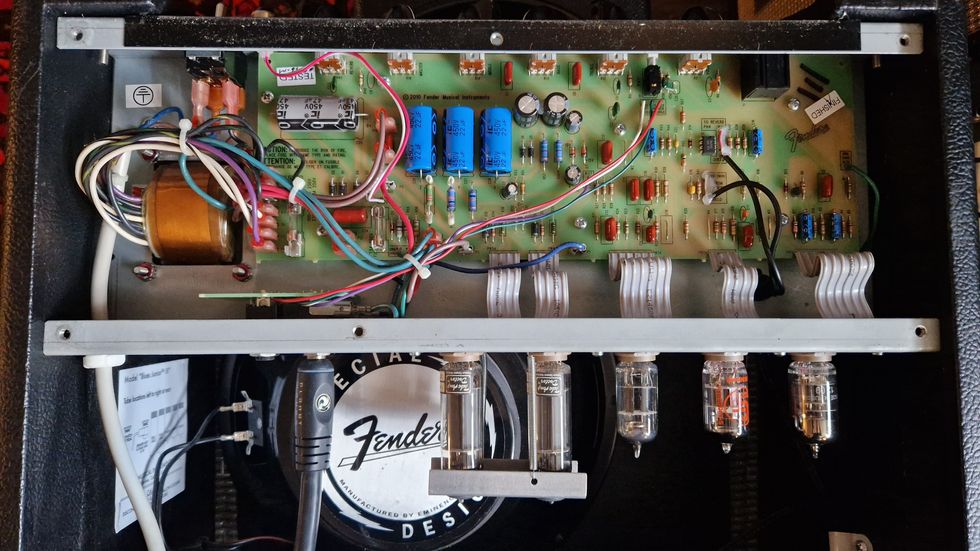
Here’s an interior look at Jens’ own Fender Blues Junior. Space is of the essence in this mighty mite of an amp.
Extended and Amended
Bigger extension cabinets are by far the easiest way to increase the spread and punch of a Blues Junior. Good speaker combinations are closed or semi-closed 1x12, 1x15, or 2x10 cabs. The Blues Junior expects an 8-ohm speaker load but will handle anything between 4 and 16 ohms. Since 8 ohms give you the most headroom, I recommend disabling the built-in speaker entirely and sending all the power to the bigger extension cabinet for a bigger tone.
If a bigger extension cabinet isn’t enough, you could consider upgrading the output transformer to a larger one. Some will argue that the Junior’s small output transformer is a weak point, limiting fullness and bass response. I, however, think the modest power transformer is properly sized for this small amp. It is, after all, supposed to be a low-wattage amp with early breakup. A bigger OT is not the right medicine in such a small combo, in my opinion, unless you’re always driving an extension cabinet.
Fixing the Fixed Bias
Before we leave the power amp section, I must mention that the Blues Junior is famously known for having a too-hot fixed bias setting on the EL84s. Juniors benefit from a cooler bias, which also increases tube lifetime. Since there is no available bias pot, you have to adjust the bias by changing the values of the two resistors—a 22k/R31 and 33k/R37, or a R52 and R51 in more recent models. This is especially helpful if your amp wears out EL84 tubes fast. The good news is that Fender has improved the latest model IV with a cooler bias setting.
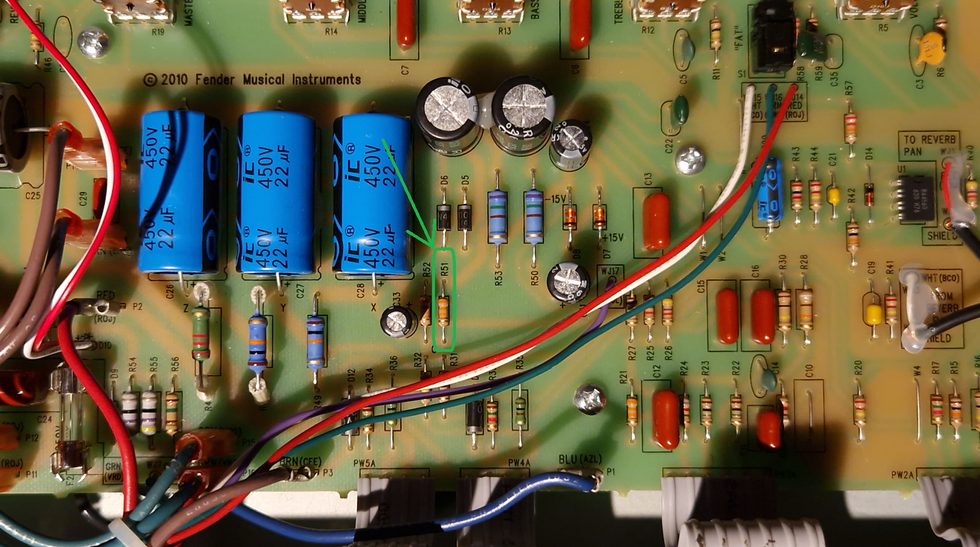
This photo shows the location of the R51 resistor in the Blues Junior circuit, important in recontouring the bias.
So, you’ll need to reduce the amp’s bias current to between 25 mA and 30 mA, from the factory-set 42 mA. (You’ll need a bias probe to measure the bias. To learn more about using a bias probe, see Jeff Bober’s story “Amp Man Returns, to Explain Tube Bias” in Premier Guitar’s June 2023 issue or online at premierguitar.com.) The simplest way to accomplish this via reducing the value of a resistor is to add another resistor in parallel. You simply solder a resistor on top of the existing one on the front side of the circuit. Twist the legs of the new resistor around the old ones a couple of times so it stays in place. That way, you don’t have to remove the original resistor. Then, warm up and apply the soldering tin to the legs. It’s that easy. I recommend adding a 220k resistor in parallel with the original 33k to see where that leads you. If you need to reduce more, use a smaller resistor or add another one in parallel until you are between 25 mA and 30 mA.
As far as tubes go, the circuit design will allow lower gain tubes—such as a 5751 or a 12AU7—in the preamp V1 and V2 positions. But you’d lose volume and break-up. I find that the amp’s sweet spot, meaning the transition between clean and distortion, is already pretty much where I want it, and I like the usable range between the volume and master volume controls, so I would advise against inserting low-gain tubes.
The tone stack and EQ balance is well-designed, too, with a nice, usable range in the bass, mid, and treble controls. The Junior can do both sparkling cleans and crunchy distortion. The mid control offers more mids than the scooped Princeton. With the mid knob set at max, I’m able to get some British-style distortion. If you think that your Blues Junior sounds a little glassy, you should experiment with other loudspeakers. Inserting a broken-in Celestion Greenback or a Jensen P12Q would easily make cranked tones smoother or the clean sound more authentic-vintage Fender. The Blues Junior III I’ve been playing lately comes with a Fender-labeled speaker made by Eminence—a good, all-round speaker with nice sparkle and a firm bottom end.
Doffing the Caps
Next up: a highly recommended maintenance mod. Electrolytic filter caps are important components in terms of noise, loudness, and clean headroom. The cheap, low-quality caps that come in blue or grey are a well-known problem with the Hot Rod Deluxe and Blues Junior. The good news is, they are quite easy to swap out. I recommend replacing these if you hear any 50Hz hum or see any signs of cap leakage. There are several cap replacement kits available online for the Blues Junior, running from about $60 to $100.
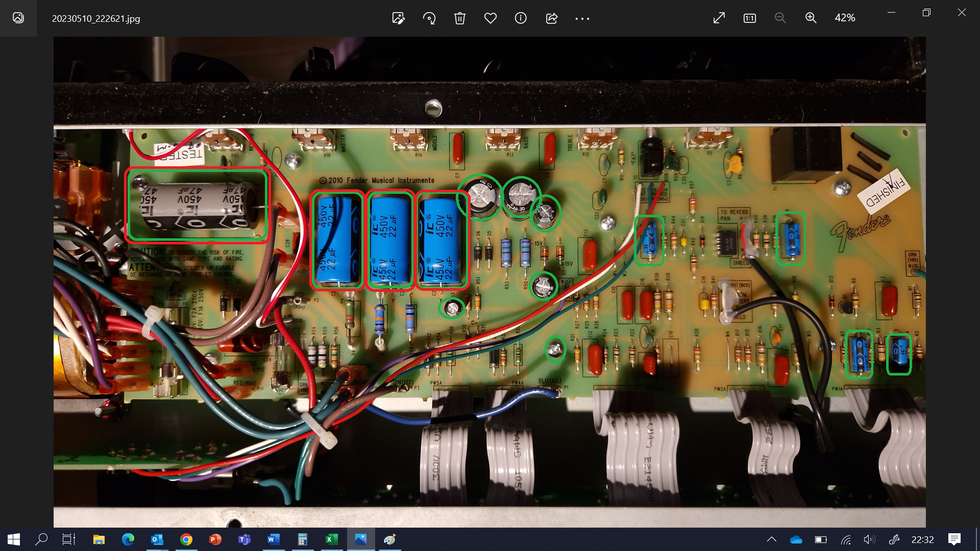
Note the 14 circled electrolytic capacitors in this photo. Filter cap replacement kits are affordable and widely available online.
Start by replacing the four largest capacitors: three with a value of 22 uF and one with a 47 uF value. Again, it’s simple. Just clip the legs off the factory-installed capacitors as close to the caps’ bodies as possible, and remove them. Then, twist the new caps’ legs around the old ones and solder them in place. Just be careful with both your clippers and soldering iron around the PCB. If that doesn’t get the results you want, replace the smaller caps, too.
Moving on to the reverb, I can understand the cost-efficiency decision that Fender made with the simplified, transistor-based circuitry. Not having a tube-and-transformer-based reverb lowers expense and weight, and there are fewer things that can fail. Luckily, there is a proper spring reverb tank in the back of the amp. In fact, the Blues Junior I, II, and III are famously known for having too much reverb. Anything above 2.5 on the reverb dial and the amp swims in overwhelming and bright ’verb.
Another recommended, and cheap, mod is to add an 82k resistor in parallel with the original 220k/330k in the reverb circuit, to tame and darken the reverb. This goes parallel to the R44 (220k) resistor on the made-in-Mexico board or the R50 (330k) resistor on the made-in-U.S. green PCB. Once again, an easy fix. As in the bias adjustment mod we covered earlier, we solder a new 82k resistor on top of the existing 220k on the front side of the circuit. How? By twisting the leg of the new resistor around the old one a couple of times so that it stays in place, and then applying the soldering tin. Voilà!
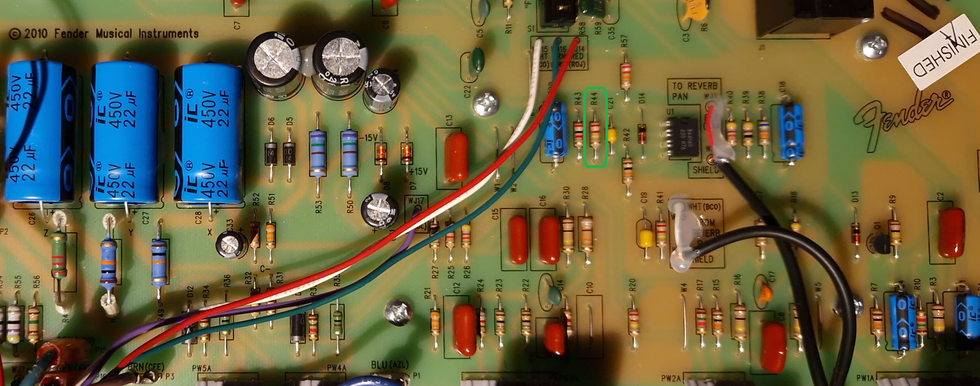
To restore the Junior’s classic Fender reverb sound, a new resistor should be wired in place atop the R44 factory resistor, circled in green.
With this mod, the reverb sounds more like the classic black- and silver-panel ’verbs, but with a wider knob-control span. I have read that the early made-in-the-States models have a darker reverb tone and might not require this move. But if you do this and find change isn’t enough, you may want to experiment with replacement reverb tanks with different decays.
So, that’s my take on this popular little warrior tube amp, and some easy mods. Even without changing the circuitry at all, with the Blues Junior, for a little money you get a lot of vintage Fender tone with a modern twist.
How a not-so-special silver-panel amp was transformed into solid gold.
Let me share a tale about a very enjoyable and educational gear purchase. It involves a celebrity-owned vintage Fender amp, and tonal disappointments followed by experimentation. It’s about how I turned a disappointing purchase into what became—and still is—my main gigging amp. Having used this amp on approximately 100 gigs, I’ve really gotten a return for the initial $1,195 investment, not even counting the valuable learning it has given me. So, this is the story of my Linda Ronstadt Deluxe Reverb.
In 2010, I found a vintage Fender amp on eBay that really caught my eye. It was a celebrity-owned ’71 silver-panel Deluxe Reverb with 6L6GCs that had been modded and sported a powerful and heavy JBL D120F speaker. It came with a vintage, blue, road-worn flight case that looked like it had been around the globe a dozen times. The amp circuit had been entirely re-wired to AB763 black-panel specs, with all caps replaced with newer orange drops and about half of the resistors replaced. (I later swapped out the silver control panel to match.) You could see by the component leg twisting, soldering, and cutting that the work was done properly. The plastic wires were even replaced with high quality BF-style cloth-covered wires.
The number 13 was sprayed on the blue flight case, and the amp had “Ronstadt 18” sprayed on the its upper and lower back panels, indicating that the amp belonged to a band with a crew that handled the backline equipment. It seemed to have been a working musician’s instrument and had been well looked after. The whole package was promising. After a short bidding round, I ended up paying $1,195 to its owner, an acquaintance of the Linda Ronstadt band.
Six weeks later, the amp arrived safely at my house in a flight case that smelled bad but looked fantastic. I immediately swapped the original 110V power transformer for a Mercury Magnetics 230V version. My first impression was that it sounded firm and mean, with a harsh attack and gritty treble. But it was too sensitive on the treble pot to my liking, and my Jimi Strat with Fender CS69 pickups didn’t sound good thorough it. The tone was cold and shrill at both lower and higher volumes. I wasn’t able to tame it with the EQ knobs on my guitar, pedals, or the amp. It was either too muddy or too bright. Maybe this was the reason the amp was sold? I spent days playing around with it, trying different guitars and pedals. I managed to find satisfying tone only at loud volumes with a Tube Screamer, which removes both the upper treble and lower bass (the SRV trick).
A backside view of the Ronstadt Deluxe Reverb, with its lineage tattooed in white paint.
I wanted more. I wanted to play this amp without a Tube Screamer and find a more balanced tone. There was no point in keeping a bad-sounding celebrity amp. My goal was to make it smoother and warmer, with less attack. I started by disengaging the bright cap on the vibrato channel, which tamed the upper treble and allowed me to turn the treble pot beyond 4. All reissue Deluxe Reverb owners with newer Jensen C12N speakers should try disengaging the bright cap. Second, I installed a mid switch on the back, instead of the no-longer-relevant ground switch. This mid switch acts as a fat boost and selects between the stock 6.8k resistor and a fatter 22k resistor, to offer more mids. Immediately, there were improvements. The added mids pushed the power amp circuitry into more warmth, crunch, and distortion. I could’ve also installed a 25k pot instead of the mid switch, to have endless mid levels to choose from. But simplicity is king. Having only two choices makes life easier.
Some other mods to reduce the clean headroom followed. I inserted a 5U4GB rectifier tube instead of the GZ34, for less attack and more sag and compression, and pulled out the V1 preamp tube to increase the preamp signal level, pushing the preamp and power amp sections harder.
This road case, which arrived in stinky but durable condition, was part of the eBay deal that brought the Deluxe into Jens Mosbergvik’s collection of Fenders.
The results were rewarding! The shrill treble was tamed and my pick attack was smooth and just snappy and responsive enough. The treble was balanced by punchy lower mids, improving the overall EQ balance. Now the amp was more sympathetic and supported more and different kinds of guitars. No boost or overdrive pedal was needed. With these mods, the Deluxe became a perfect player’s amp, and definitely a keeper. A punchy Deluxe Reverb with 6L6s delivers approximately 30 to 35 watts, so can cope with larger stages and settings.
In the ensuing years, I’ve done further experiments with this amp—most significantly inserting a larger 8 ohm output transformer from a Vibroverb, and a power transformer from a Super Reverb, as well as upgrading the big DC and filter caps to support the higher plate voltage. Together with an EVM12L speaker, this amp gave me a superb Stevie Ray Texas Flood tone. Right now, I use an Eminence Maverick speaker with an inbuilt 9 dB attenuator that can turn the volume down to a Princeton Reverb level, while still achieving full tube breakup. Yes, I know. It’s awesome!
Cop-call-deterring boxes from Weber, Two Notes, Bugera, Radial, Mesa/Boogie, and more.
Sure, you could simply roll down your amp’s volume when you receive the evil eye (or worse) from your bandmates, engineer, spouse, or neighbor, but then your tonal sweet spot disappears. We’ve rounded up 10 attenuation options, from $50 to $550, that’ll let you hit your amp as hard as you like, while still maintaining your friendships.
Torpedo Captor X
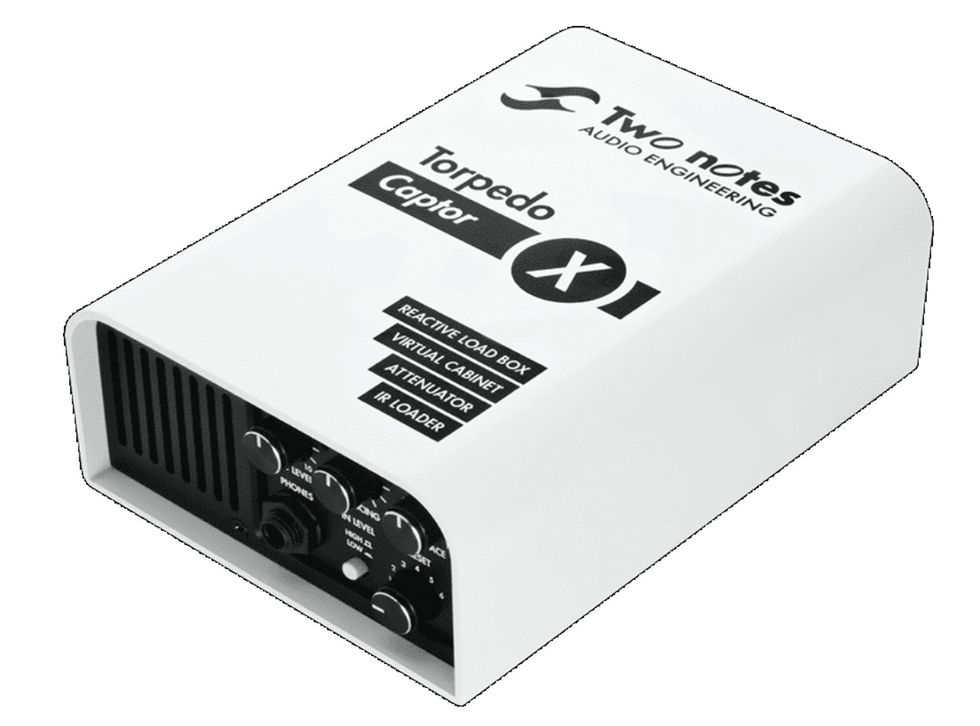
Not just an attenuator, this little powerhouse also functions as an IR loader and cab simulator, and can be paired with your laptop or mobile device for expansive tone shaping.
Little Black Amp Box
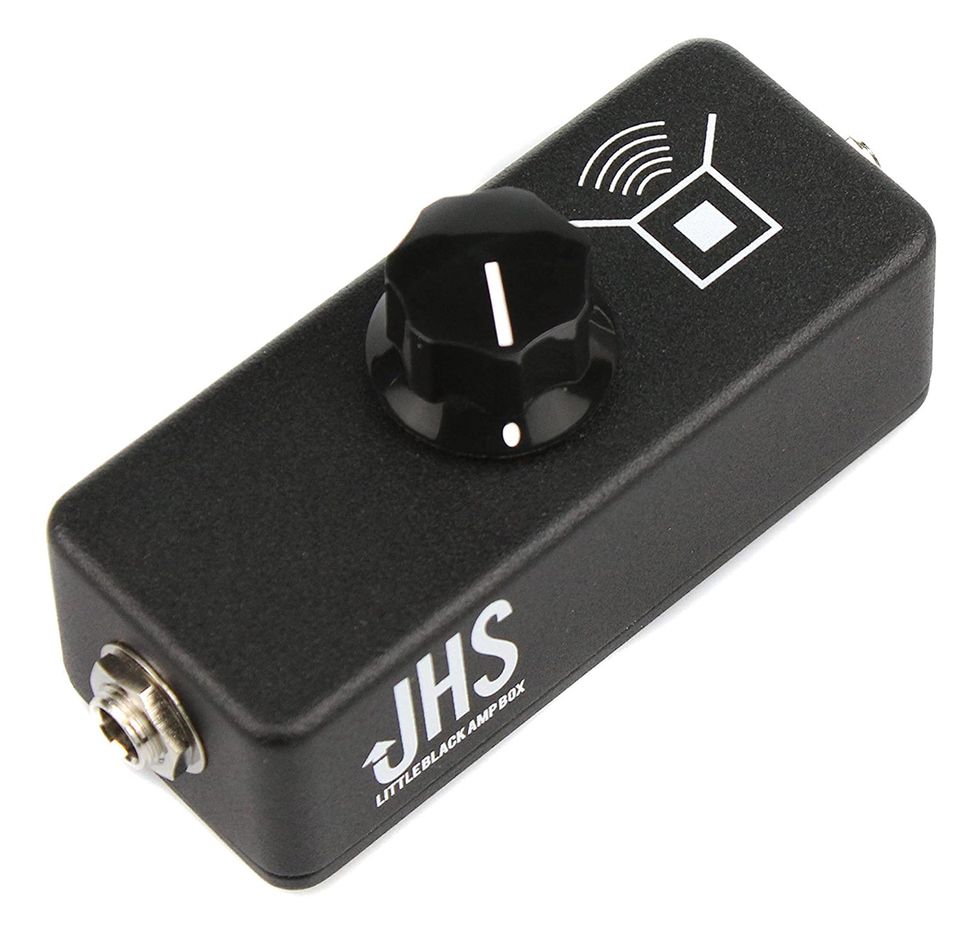
This inexpensive and different device to attenuate allows you to tame your volume—while still pushing your amp’s front end—by placing it in your series effects loop.
Brake-Lite
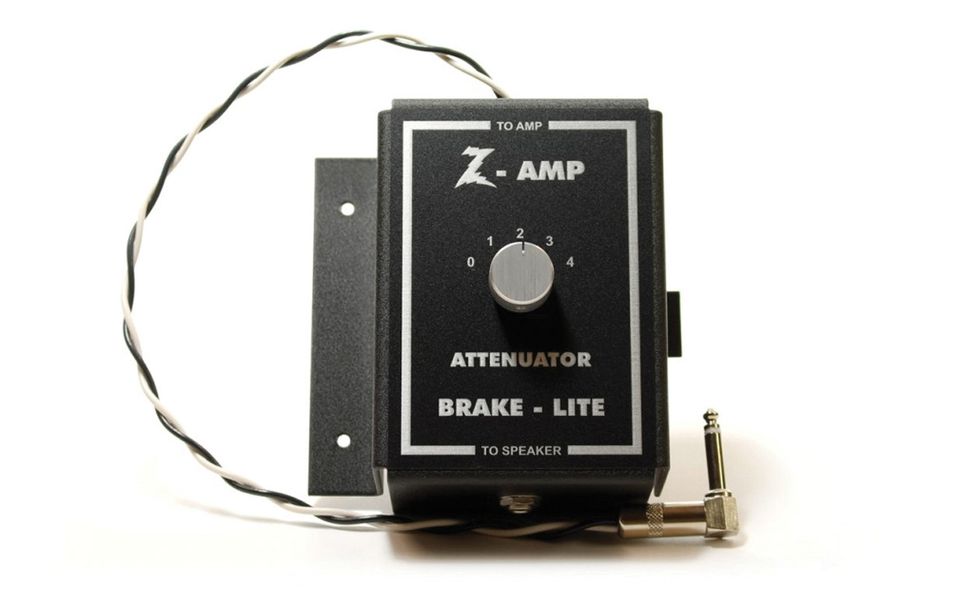
For any tube amp up to 45 watts, and for use with 4, 8, or 16 ohm loads, this attenuator mounts inside your favorite combo and out of the way while you enjoy bedroom-level audio volumes.
Ironman II Mini
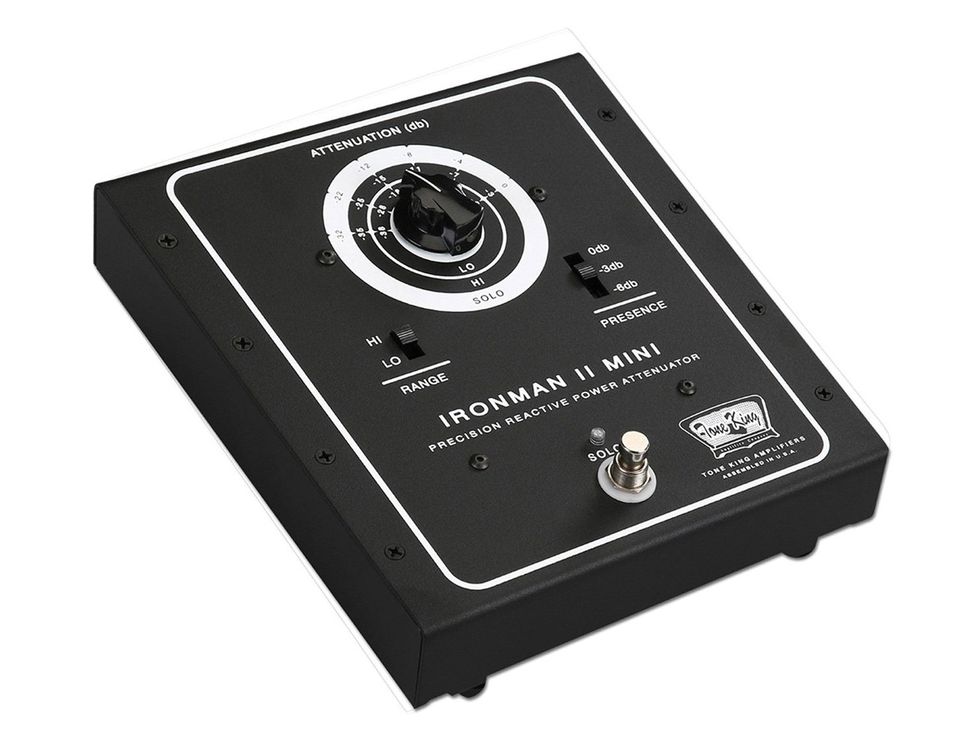
Ideal for tube amps up to 30 watts, and pedalboard friendly, this petite version of the company’s 100-watt unit attenuates your amp’s volume with the very same reactive load and transformer-coupled tech.
PS1 Power Soak
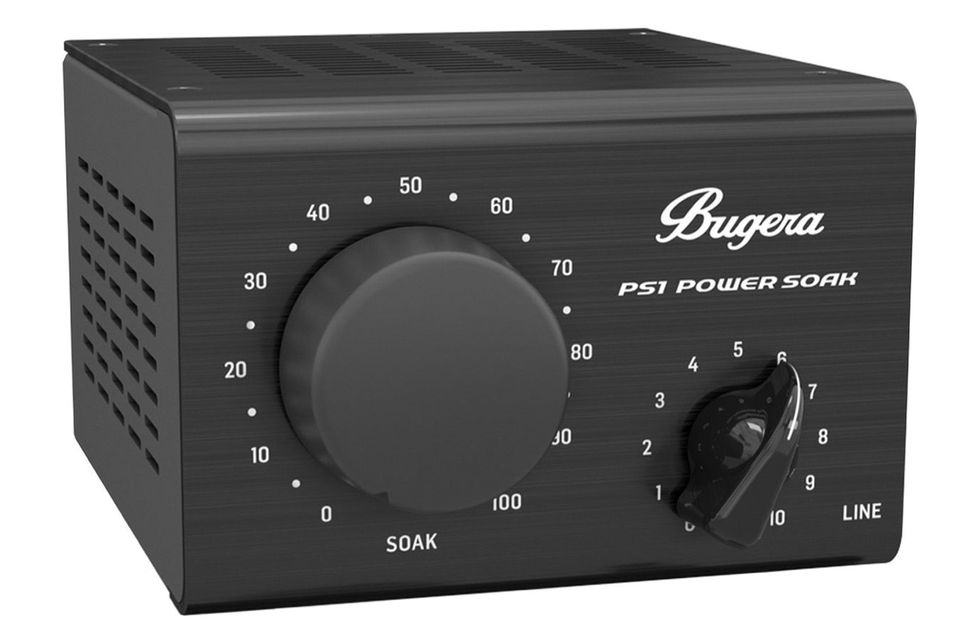
Priced attractively, this 100-watt unit’s multi-impedance input connectors will match virtually any amplifier for cranked-amp tone at manageable volumes.
Reducer
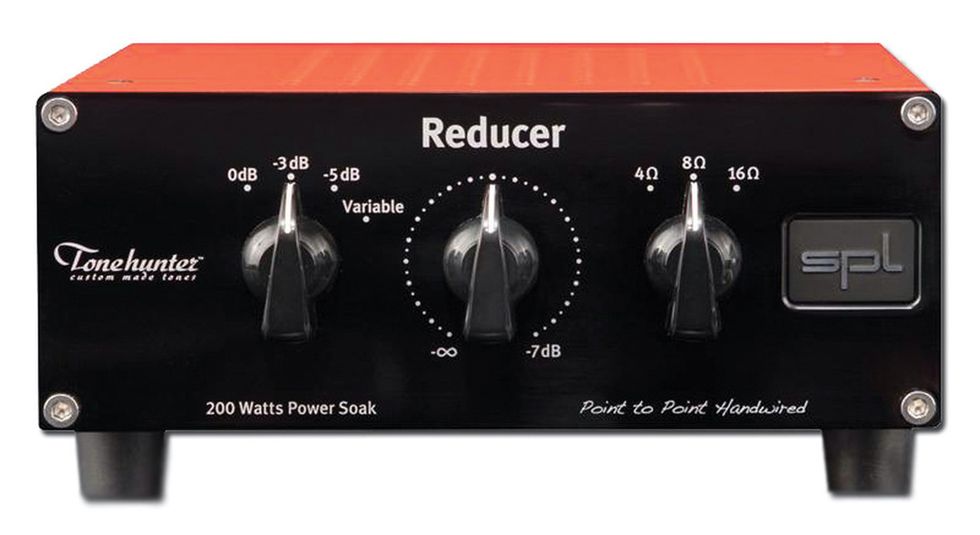
Developed in coordination with Tonehunter amps, this passive, point-to-point handwired attenuator features 200-watt power soak and is suited for amps with 4, 8, and 16 ohms.
MiniMASS
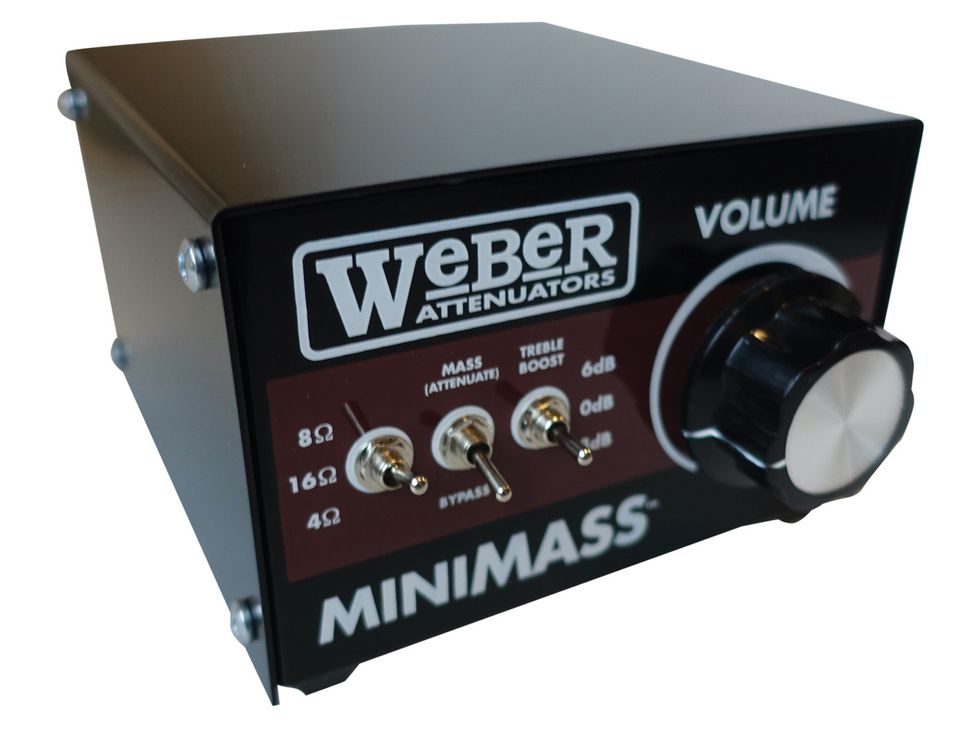
Designed for 35-watt amps and lower, this box features a 3-position treble compensation switch and an actual speaker motor for realistic interaction between the attenuator and the amp’s output circuit.
Headload Prodigy
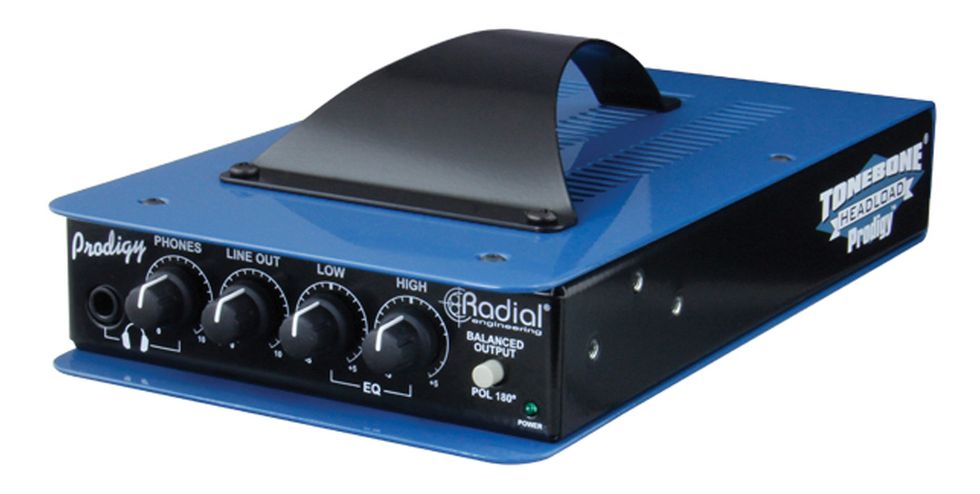
This load box offers selectable output levels or complete attenuation, and features a built-in DI and EQ as well as an onboard headphone amp for those times you need to be completely silent.
POWERHOUSE
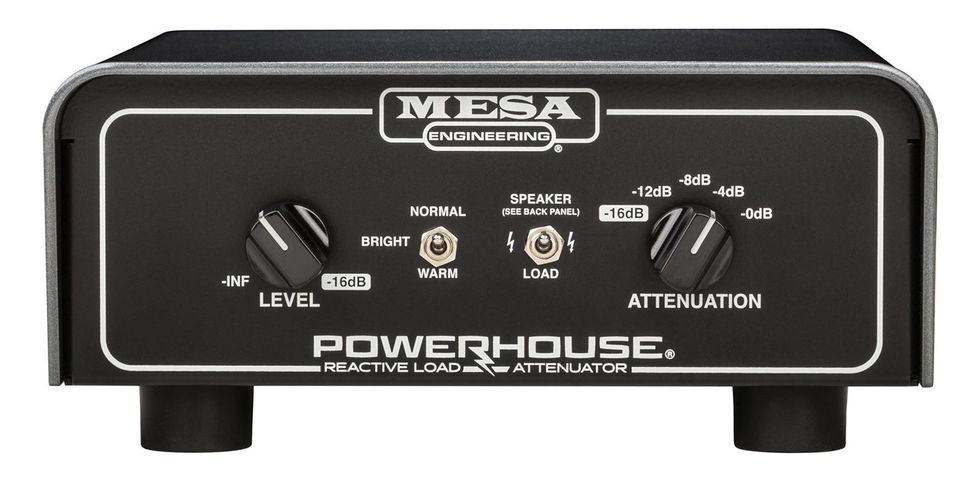
Rated for guitar amps up to 150 watts, this attenuator features five levels of power reduction, a 3-position voicing switch (normal, bright, or warm), and a speaker/load switch for options galore.
RockCrusher Gold Face
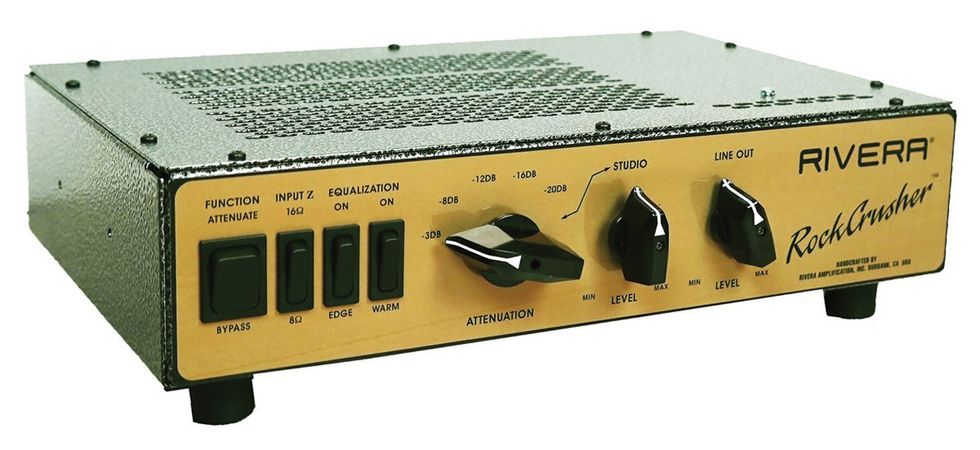
Boasting balanced XLR and unbalanced 1/4" outs for easy interfacing, this attenuator/load box was designed to ensure the amp and speaker see each other in a proper relationship of impedance and inductive/capacitive reactance.
How to make a Bassman, Twin, or Super Reverb sound more Experienced.
In my July column about achieving classic sounds with various Fender amp and guitar pairings, I briefly mentioned the black-panel Bassman as a tonal gateway for Hendrix fans. Let me go a bit deeper into the topic of chasing Jimi's tones with Fender tube amps.
Most players might think they need a Marshall to emulate Hendrix, and that Fenders are way too clean, bright, and twangy for the sustaining distortion and feedback. That is partly, but not completely, true. Hendrix's crazier lead tones did not come from his amps alone, but from amps and pedals paired in the studio, and he played a lot of Fender amps. I think learning Jimi's picking technique and chordal approach are more important than learning to cop his tone, and, according to biographies, he actually wasn't very much focused on gear. Still, he did create a signature sound and I've developed ways to dial it in.
Early in his career, Hendrix played Fender and Sunn amps, among others. But in most photos that were taken of him onstage, he is holding a Strat in front of Marshall stacks with Super Lead or JTM45 heads. Let's look a bit closer at the JTM45. When released in 1962, the circuit was based on the 1958 to 1960 Fender Bassman—a 40-watt, tube-rectified, dual 5881-tube, push/pull amp feeding four Jensen 10" P10R alnico speakers in a combo-style cabinet. In fact, it was almost identical.
Fender's narrow-panel tweed amps have inspired numerous amp builders and manufacturers, right to this day, and the most famous are probably the 5F6-A circuit Bassman, 5e3 Deluxe, and 5E8-A Twin. In my opinion, they are the best-looking guitar amps of all time and they excel at both clean and crunchy tones.
The Bassman has several EQ possibilities through its airy 4x10 cabinet, with full-spectrum tone and crunch that makes it a great Hendrix-style amp when pushed. The most significant change in the JTM45 was the closed-speaker cabinet with 12" Celestion G12Ms in pairs or quads. Jim Marshall did this to make his amp louder, firmer, and punchier, but it also became more mid-focused. A bigger power transformer added further to the punch and firmness. A 12AX7 in the V1 preamp spot instead of a weaker 12AY7 also made the amp louder but did not change the tone. There were minor changes in EQ cap values and the negative feedback resistor, partly because of component availability. That made the tone controls act differently, with more mids in both the bass and treble pots. Summarized, the JTM45 is louder and has more mids and therefore more distortion. However, I think most players would not tell these amps apart in a blind test if they were played through the same speaker cabinet.
Out of respect for history, you should never remove an original Jensen speaker in a vintage Fender amp unless it's seriously damaged.
So, my advice for getting Jimi's tone with the tweed Bassman, vintage or reissue, is to lower the bass to prevent fart-out, set the volume high for a raw, unfiltered sound, and use the guitar volume to dial back to a cleaner and more mellow voice. If you manage to tame the brightness across the amp, pedals, and guitar, you will be greatly rewarded with a detailed, nuanced response to picking, fretting, bending, vibrato, and other work on the fretboard.
Staying in the tweed era, the 5E8-A circuit Twin is also useful for Hendrix-style distortion, and its 12" speakers will put you closer to a Marshall's solid punch. The Twin doesn't break up as quickly as the Bassman, but you can pull one of the two rectifier tubes to compensate, and get more sag and less clean headroom. The vintage tweed version of this amp has dual 5U4GA rectifier tubes, and the reissue has dual 5U4GBs. Thanks to Fender for not going with a more efficient single GZ34 but keeping it essentially vintage-correct.
Fender has reissued the tweed Bassman and low-power Twin as the '59 Bassman LTD and '57 Custom Twin-Amp. You can put vintage-appropriate Celestion G12M speakers in the reissue Twin for a more classic Marshall-style tone. For the reissue Bassman, I think the best route to a Hendrix tone is replacement WGS 10" Veteran speakers. But a word of caution: Out of respect for history, you should never remove an original Jensen speaker in a vintage Fender amp unless it's seriously damaged.
Finally, we've come to the black-panel/silver-panel Fender Bassman 50-watt and the Super Reverb. Of the three black-panel Bassman circuits—AA864, AA165, and AB165—the AB165 distorts the most. But it lacks a British flavor unless you install a 25k mid pot in place of the fixed 6.8k mid resistor. The mid knob then acts as a crunch control, so it's definitely worth the effort of installation. The black-panel Super Reverb with Jensen P10R or CTS ceramic speakers is quite similar to the Tweed Bassman. If you dial the mids high, lower the bass, and push it really hard … you almost have a Tweed Bassman tone with combined distortion from the preamp, power amp, and speakers. As always, for more crunch at lower volumes you may disengage two of the speakers, use a 12AX7 V6 position phase inverter tube, and pull the V1 tube.
Go online to see my video exploring some of these sounds. Meanwhile, excuse me while I kiss the sky.
Watch Jens Mosbergvick put Hendrix mojo on his Fender Super Reverb, Marshall JMP50, and Fender Bassman, with some help from a Mythos Argos Octave Fuzz and a wah-wah. The Super has its original CTS ceramic speakers, the Marshall sports a pair of Celestion G12Ms, and the Bassman has its original two Oxford 12T6s.
[Updated 7/26/21]
How to know when a vintage amp is worth rescuing.
I'll bet most of us have experienced this: You're en route to the grocery store on a pleasant Sunday morning, not a care in the world except getting home for breakfast in a timely manner … and then it happens. You see someone staking a garage sale sign at the corner. Your mind begins racing as you do the math. The person with the sign looks old enough to have cool stuff and I'm the first to see this sign. Will it be me who finds the mint '59 Bassman and Les Paul that must certainly be waiting there?
Cutting the wheel, you skid around the corner and up to the address. Rrrrrrrr! Out of the car! Walking quickly, but not so quickly as to arouse suspicion, you frantically scan the dark recesses for anything that resembles a musical instrument. Then, eureka! You push your way past the Hungry Hippos game and Tijuana Brass albums to your prize: a filthy and very tired-looking silverface Fender Champ. Now, shaking with excitement, you try to contain yourself as you go to pay for your purchase. After deft and masterful negotiations that get the seller down from $200 to $195.50, you race home to check out your treasure. In the door and past your starving family (dang—I knew I forgot something) and into the basement you go. Bwa-hahaha.
You look the amp over, trying to see the gem under the filth, dried paint splotches, and obvious years of neglect. After some time spent with a damp cloth and shop vac, you're ready to get down to it. Everything looks to be intact. Perhaps, if this wasn't a Sunday morning, you'd have your amp tech slowly apply voltage to make sure there were no unforeseen problems before full voltage is unleashed into the circuit, and thus avoid any costly issues. But in your enthusiasm, you feel it's worth the risk. Amp goes on. Still good. Guitar in hand, first note and … pttthhhllsdfy comes out of the speaker. What? Gulp. Okay. This can wait until tomorrow.
Before we discuss how to decide whether an amplifier with an unknown history is worth rescuing, let's first define “worth" as “value" in this situation. The value of musical instruments may have different meanings to different people, and this often depends on the context. Example: I once had someone send me an old and completely beat-up Barcus Berry 1510 solid-state amp from the '70s. It was DOA. Usually an inexpensive item like this would not be taken into my shop, as the repair cost would be too high and finding another one in working condition would make more economic sense. That said, I took it in since the fellow shipping it to me was a very good customer and I owed him one. I spent a couple of hours on it, and the best I could get out of it was low output and very distorted sound. I called off the repair, since I'd need to spend additional time to get the amp back to like-new sound. It simply wasn't worth it.
Here's where the “value" part comes in. If this amp had been salvaged within those couple of hours, he'd have paid $250 or so for my time (which I didn't charge for) and already be upside-down in street value if he decided to flip it. However, I mentioned it had a very distorted sound. This just happened to be one of the most incredible overdriven tones I've heard—the sound of an amp just about to explode. I ended up giving it to a client who found it to be just what he'd been looking for, for years. To him, it had tremendous value and he continues to record with it regularly.
So the moral is: Value really depends on your application. A busy studio may have dozens of amplifiers on hand that clientele can choose from. All with a specific purpose. Order of importance for them may be, first, having a unique vibe and sound for specific projects, and, second, reliability. If a vintage amp has the sound they're looking for and still has the original filter caps that are well beyond their service life, it may be acceptable to leave them in to keep the sound as is. Likewise with the tubes and speakers. The speaker may even be tattered and have a few pinholes. But it's got a sound the studio likes, so it's fine.
You can still find these Music Man 112 RD amps at a good price. They are solidly designed, reliable, and real workhorses. This one received a thorough check and clean, and a new power cord. Repair cost: $165.
The gigging pro may have a different agenda. He or she would likely want reliability to be first on the list. If an amp doesn't continue to function through a set or is hard to repair on the road, it's a real problem. Even if there's a backup handy, you don't want to go silent at exactly the wrong moment. Not to mention valuable time spent trying to find a qualified repair shop in the small town you're heading to for the next gig. If you have a complex amp with channel switching and effects loops, this is doubly true. I've received plenty of panicky calls from the road asking if I know of a repair shop in the middle of nowhere. Not only is this inconvenient, but having this kind of doubt or concern on your mind can affect your performance.
Now, let's get back to that silverface Champ from the garage sale. If an amp's history and origins are unknown, I tell folks a good rule of thumb is to budget between $150 to $300 to get a simple amp like this into solid working shape. Of course, the price can also be $0 if it's just fine or you're the handy type. And it can go up if the amp has been flooded and its transformers need to be replaced. Replacing components of this nature can also bring the value down, if it's a collectable piece. These are all possibilities to take into consideration before making a purchase.
How can you make an informed decision before buying? Educate yourself! In this day and age, all it takes is a few clicks with the smartphone you likely have in your pocket right now. Sites like eBay or Reverb are fantastic for seeing what the model you're looking at is going for, even in various conditions. After that you'll need to have some basic knowledge of what can be problematic and what should be replaced in vintage amps for safety sake. We'll get to that in a moment.
A check and clean, a cap job, and a new power tube got this nice little Gibson GA5 back in shape. Repair cost: $230.
At this point, I should mention that if an amplifier appears to be in such a state that it probably shouldn't be plugged into the wall and turned on … then don't. Especially if the amp has been stored in a damp location or has any obvious water damage. I've had many older amps come in for restoration where the insulation has rotted off the wires. This is a serious fire and shock hazard. If this is the case and the amp's value or rarity merits the repair cost, then take it to a qualified technician before firing it up. I'll also mention that many vintage amps don't have polarized plugs or a three-prong plug with ground. Old two-prong cords should be replaced and made safe as soon as possible.
Also, before trying an old “found" amp, you should check the fuse to confirm it's the correct value. It's not uncommon to see significantly larger fuses used when a previous owner incorrectly thinks that the fuse value is at fault for his amp shutting off. Ridiculous as this sounds, it happens.
Okay, with that out of the way, let's take a look at some of the more common issues and some basic, possible causes. And by the way, if an amp makes horrible sounds, smokes, sparks, etc., immediately turn it off and unplug it from the wall!
Watch John Bohlinger test out some holy-grail Bassmans.
